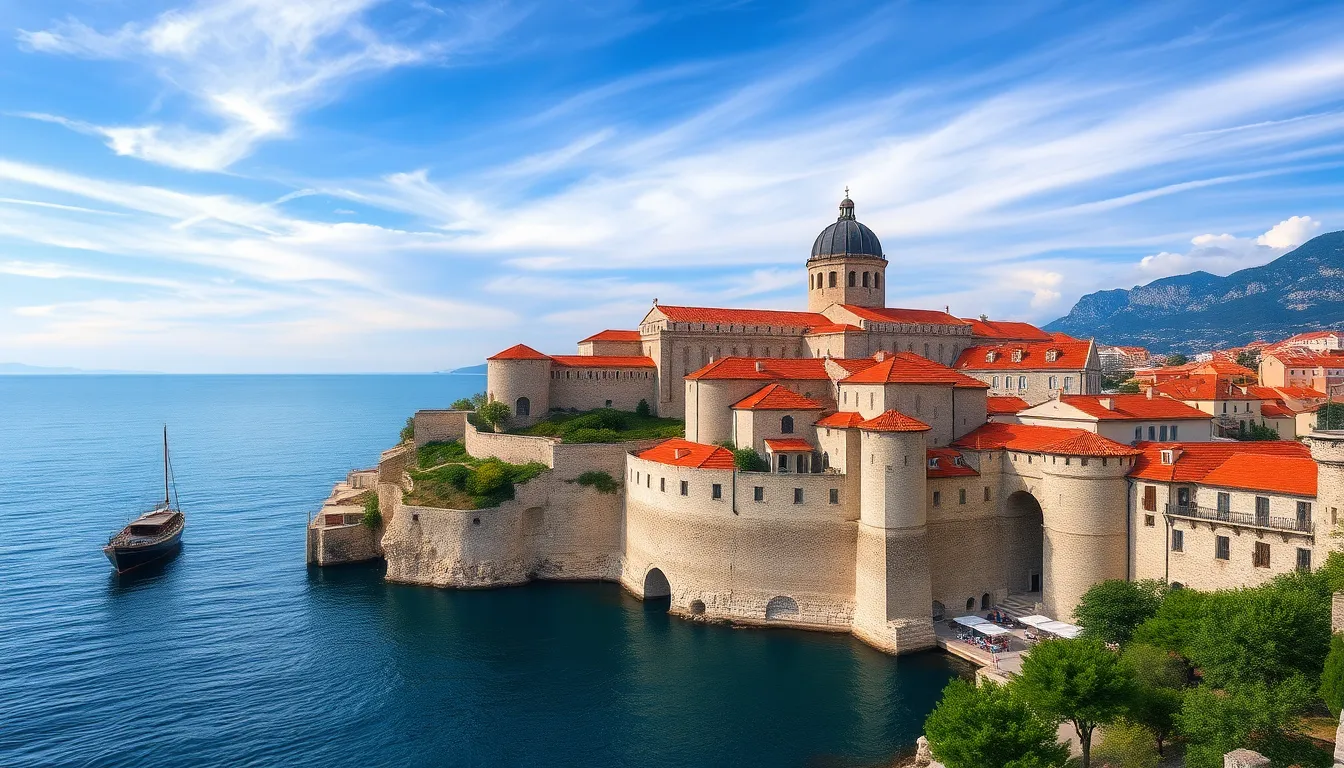Fans of Game of Thrones know that King’s Landing is the heart of the Seven Kingdoms, teeming with intrigue and drama. But what many might not realize is that this iconic city isn’t just a product of CGI magic. It comes to life in stunning real-world locations that add depth to its portrayal on screen.
From the sun-soaked streets of Dubrovnik to the historic architecture of Malta, the filming sites of King’s Landing offer a glimpse into the breathtaking landscapes that helped shape the series. Exploring these locations not only reveals the artistry behind the show but also invites fans to walk in the footsteps of their favorite characters. Join the journey as we uncover the stunning backdrops that brought King’s Landing to life.
Table of Contents
ToggleOverview of King’s Landing
King’s Landing, the capital of the Seven Kingdoms in Game of Thrones, represents a central hub of political intrigue and power struggles. Its settings combine historical architecture and stunning landscapes, creating a believable backdrop for the series. The primary filming location for King’s Landing is Dubrovnik, Croatia, known for its well-preserved medieval walls and beautiful coastal scenery. This city provided the perfect canvas for the bustling streets and royal palaces depicted in the show.
Dubrovnik’s Old Town served as a primary site, particularly the Rector’s Palace and the City Walls. These locations vividly captured the grandeur of the Red Keep and the various marketplaces seen throughout the series. Additional scenes filmed in Malta, including Fort Saint Elmo, illustrated earlier episodes before the series transitioned predominantly to Croatia.
Filmmakers utilized these striking real-world locations to enhance storytelling authenticity and immerse viewers in the world of Westeros. The blend of rich history, cultural elements, and breathtaking landscapes not only brought King’s Landing to life but also attracted countless fans to these locations, eager to experience the magic of the show firsthand.
Locations Used for Filming

The filming locations for King’s Landing include stunning real-world sites that enhance the series’ production value. These locations not only provide visual splendor but also ground the story in a tangible reality.
Dubrovnik, Croatia
Dubrovnik serves as the primary filming location for King’s Landing. The medieval architecture, vibrant coastal scenery, and well-preserved walls create a striking backdrop that captures the essence of the fictional city. Notable sites in Dubrovnik include:
- Rector’s Palace: This site represents the grandeur of the Red Keep, showcasing intricate Renaissance-style architecture.
- City Walls: The robust walls offer a cinematic view of the city and evoke scenes of political intrigue and battles.
- Stradun: This main street reflects the bustling marketplaces and the everyday life of King’s Landing citizens.
The selection of Dubrovnik allows for authentic visuals, drawing viewers into the heart of Westeros.
Other Filming Locations
In addition to Dubrovnik, several other locations contributed to the portrayal of King’s Landing in earlier seasons. These include:
- Malta: Various sites in Malta, such as Fort Saint Elmo, provided a medieval aesthetic that aligned with the show’s setting. Scenes filmed here featured the original depiction of King’s Landing before the move to Dubrovnik.
- Castle Black and The Wall: While primarily associated with the North, locations like Magheramorne Quarry in Northern Ireland offered contrasting settings that highlight the geographical diversity of Westeros.
These additional sites help to create a comprehensive world within Game of Thrones, enriching the narrative and its visual storytelling.
Significance of Filming Locations
Filming locations play a pivotal role in the success of a series like Game of Thrones, particularly in portraying the vivid world of King’s Landing. These sites not only provide visual splendor but also enhance the narrative’s authenticity.
Cultural Impact
Filming in real-world locations instills a rich cultural significance in King’s Landing. Dubrovnik, with its historic architecture, embodies the essence of medieval Europe, bridging the gap between fantasy and reality. The use of authentic sites, like the Rector’s Palace, resonates with viewers, immersing them in the cultural intricacies of Westeros. Local traditions, craftsmanship, and the preservation of historical structures further amplify the connection between the text and its visual representation. This cultural depth attracts tourism, as fans flock to these iconic sites, eager to explore the landscapes that brought their favorite series to life.
Visual Aesthetics
Visual aesthetics significantly contribute to the captivating imagery of King’s Landing. Locations like Dubrovnik’s City Walls and picturesque streets ensure the city appears as an extravagant hub of power. The blend of coastal views, ancient structures, and vibrant street scenes creates an engaging backdrop that enhances the show’s storytelling. The transition from earlier filming in Malta to the majestic settings of Dubrovnik brought a notable increase in visual grandeur, offering stunning cinematic quality. Each location, from bustling markets to serene vistas, adds layers to the visual narrative, enriching the viewer’s experience and solidifying King’s Landing’s status as an iconic location in television history.
Behind the Scenes
Filming King’s Landing involved meticulous planning and execution. The choice of Dubrovnik, Croatia, as the primary filming location stemmed from its stunning medieval architecture and scenic coastal views. The production team transformed the city’s iconic landmarks into recognizable elements of Westeros.
Key sites such as the Rector’s Palace served as the Red Keep, showcasing the opulence associated with the Iron Throne. The City Walls, a striking feature of Dubrovnik, provided breathtaking panoramic views that captured the essence of King’s Landing’s dramatic settings. Additionally, Stradun street vibrantly illustrated the bustling life of the city’s inhabitants.
Earlier seasons utilized locations in Malta, like Fort Saint Elmo, to establish a medieval aesthetic before transitioning to the more expansive and visually rich Dubrovnik. This switch allowed for greater cinematic storytelling, resulting in a more immersive experience for viewers.
Locations like Magheramorne Quarry in Northern Ireland contributed to the diverse geography of Westeros, offering unique landscapes for pivotal scenes. Each site selected by the crew added depth and authenticity, making the world of Game of Thrones more believable.
The combination of authentic locations and thoughtful set design resonated with audiences, significantly enhancing the cultural impact. Fans flocked to these locales, eager to connect with the fantasy world depicted on their screens. The visual storytelling achieved through these filming sites solidified King’s Landing as a legendary television landmark.
The filming locations of King’s Landing play a crucial role in shaping the visual narrative of Game of Thrones. From the stunning architecture of Dubrovnik to the historical charm of Malta each site contributes to the authenticity of the story. The meticulous selection and transformation of these real-world locations into the fictional capital of Westeros not only enhance the series’ aesthetic appeal but also deepen the viewer’s connection to the narrative. As fans continue to explore these breathtaking landscapes they’re reminded of the artistry that brought King’s Landing to life. The legacy of these filming sites endures as they remain integral to the cultural impact of the series.









